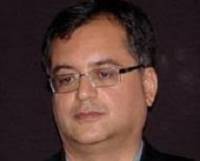Days of conventional prime time are over, it’s ‘my time’ now: Experts
Once upon a time, the entire family got together for a delightful hour or two of their daily dose of kitchen politics, complicated relationships, plots, sub-plots and counter-plots, and yes, the hard-to-avoid saas-bahu shenanigans. We are talking about the prime time viewing in the not too distant past, where the remote would be parked firmly in the hands of the lady of the house and dinner would be gobbled in the company of our favourite (or most reviled) television characters.
In what was a prime TV viewing band – from 8 pm to 10 pm – then got stretched to 11 pm to accommodate late night viewing with crime-based serials and some reality shows. Now, almost all major Hindi GECs have brought forward the viewing time to even 5.30 pm.
With fresh shows airing from 5.30 pm to 11 pm and even beyond, the very concept of a prime time band has changed, being segregated as early prime time and late night shows. With so many new shows, new timings, how are viewers adapting to the change?
As Ravish Kumar, Business Head, Kannada, Bangla and Oriya, Viacom18, put in an interesting way, that the term “prime time” needs to be replaced with “my time” since in an increasingly time pressured world, viewers self-select what/ when/ where to watch television. To further add to the choices available, channels like Star Plus have been reviving the afternoon band as well. Star Plus has launched four original shows in the 12.30 pm-2.30 pm time band targeted at the female viewers, calling it #Shetime. When asked if there was need to redefine what we call ‘prime time’ on television today, Narayan Sundararaman, General Manager, Star Plus, replied, “How we (Star Plus) look at it is that we chart out what is the viewership for Hindi Entertainment. As I call it the ‘Rhythm of the Day’, Monday- Friday, it’s a working week so audiences tend to be more towards the end of the day. But it’s not that people don’t watch TV through the day. This is what the data shows. So, I think ultimately if you have very good content and interesting programmes, people will come back and watch. A lot of times when you see programme coming in at a certain time band, it is with this belief that it’s a really nice story. Also, prime time is extremely competitive. It takes some time for a lot of stories to really incubate, so to say. Some stories debut at a certain time and that maybe outside what you call it a conventional prime time. But after a few months, they actually change the time slot and they come into the core prime time. When you run a business and have a set of programmes that are there at a certain time, there is always a need to tell new stories and those then surround around prime time.”Viacom18’s Ravish Kumar, noted that the audience composition changes throughout the day, depending on the time of day, day of week and also what is being aired. “On Colors Regional channels, we have pioneered simulcasting shows across channels, double/ triple movie premieres the same day, grand star-studded five-hour grand finales/ events, lavish weddings/ exotic location specials and celebratory festival programming – all of which have redefined what is conventionally termed as ‘prime time’ on television,” he added.
When asked what defines the prime time of a Regional GE channel in today’s broadcast landscape, Kumar stated that the viewership at any point during the day defines the prime time of a regional GEC. In the last few years we have seen a widening of ‘prime time’ with weekday original programming starting as early as 4.30 pm and continuing till 11 pm. The emergence of weekday quasi prime time slots in the early morning and early afternoon have also challenged the conventional definition of prime time. And all definitions fail when it comes to weekends, where movie premieres, events, festival specials, grand finales and sports run all through the day.
Sony’s early prime time fare includes ‘Peshwa Bajirao’ at 7.30 pm and ‘Moh Moh Ke Dhaage’ at 7 pm. Ashish Golwalkar, SVP and Senior Creative Director, Sony Entertainment Television, informed that Sony was the first channel to extend the prime time to 6 pm, but it didn’t work due to some reasons. He added, “Sony, however, has never programmed before 8 pm historically. So, our prime time always started at 8 pm. For me, the definition of prime time has changed definitely. Earlier, the entire rating mechanism and number of TV households, where the viewership used to get monitored, was largely urban focused. Now, since the entire spread of ratings in rural has gone up, the definition of prime time has actually been changed according to the place. For instance, in Mumbai, the prime time is still at 8 pm and goes on till 11 pm.”He further said, “However, in a city like Saharanpur, the prime starts at 6 pm or 6.30 pm. When there was a homogenous atmosphere, the prime time was very well defined. But now, the definition is becoming more challenging. If you look at the audience measurement, of course, the peak of the audience is available from 8 pm onwards. Depending on which market you are seeing, in some markets the prime time starts at 7 pm and goes on till 10 pm, while in others it is till 11 pm.”
When asked who had a greater say – the advertisers or the audience, Golwalkar promptly replied, “Advertisers, as most of the businesses are buying numbers (viewers). They are acquiring viewers, not even buying.”
According to Viacom18’s Kumar, the viewers, competitors and advertisers all keep them on toes with their constantly evolving needs and expectations. “This fosters a culture of constant innovation, entrepreneurship and calculated risk taking, where we are constantly striving to delight viewers and grow the content ecosystem. So, regardless of the source of pressure – it is the viewer who votes with his/her remote everyday and is the ultimate decision driver,” he explained.
With the extended hours of original programming, the question arises here whether there is adequate creative talent to support the growing need for new shows, especially scriptwriters/ storywriters? To this, Gaurav Banerjee, President and Head of Content Studio, Star India, responded, “Right now, we think that the answer is Yes for us. I can’t answer on behalf of the whole industry. From Star Plus’ point of view, the first question for us is do we want to put these shows on the channel and then we made pilots for each one of them. It is a secondary decision as to where we want to put so much of original content.”“As this industry grows, there is hunger for more content. If we can put more stories out there, people can keep watching them and that is demonstrated with what has happened in South India and also in older TV markets like the United States. So, we need to build capacity. We need more writers, technicians, better actors, more capabilities as an industry, because there is hunger for well-made stories,” Banerjee added.
Echoing similar views, Kumar of Viacom18 observed that there already is an exceptionally talented content ecosystem of writers, technicians, producers, directors, editors, programmers and agencies who are extremely responsive to viewer needs, technology evolution, global trends and demands from all quarters. “We are also constantly scanning content across platforms and industries worldwide to understand, identify and learn from best in class so that we create a vibrant, dynamic and evolving content ecosystem,” he further said.
Golwalkar noted here, “If we see the number of hours original content used to get created five years back, the number has doubled today. Not only has the prime time expanded, the number of original hours of content has increased with the number of channels. Most of the channels will start programming at 6 pm onwards by the end of this year. Number of hours of content on Sony will also be at par with most of other GECs. As any other industry, talent is a key concern. What happens is when the industry grows? It usually grows inorganically and later on they come to terms with it. The moment this happens, when there will be more demand, I am sure there will be more talent that will come in.”
For Star Plus’ Sundararaman, the principles of running this business are the same as any other business. Sharing a few factors that broadcasters need to keep in mind for successful economics and strategy behind their prime time plans, he said, “You need to first have a great product; in this case you need to tell a very good story. You need to find a market for it, so that will give you which audience you are chasing and which is the best time to catch that audience. And then you need to go out and sell it. As long as you are able to sell them at healthy rates, you will be able to make decent amount of money.”
“As broadcasters, our focus is on creating outstanding content, which elevates the viewing experience beyond passive viewing to active engagement with the characters, story, channel and the broadcaster,” commented Kumar. “We strive to create immersive and experiential entertainment, which inspires, educates, entertains and engages our viewers globally. So, a viewer behaviour-based strategy based on quality programming drives ratings, which, in turn, dictates the economics of broadcasters.”
Will we see an expanded prime time band now? Giving a producer’s take here, Sunjoy Waddhwa, CMD, Sphereorigins, said, “Gone are the days of 8 O’ clock, we started the early prime time band from 5.30 pm to 6.30 pm at Star Plus with ‘Mere Angne Mein’. Now, the show airs from 6 pm to 6.30 pm, Monday to Sunday. Sony’s prime time starts at 7.30 pm with ‘Peshwa Bajirao’. The prime time is now stretched from 6 pm to 10.30 pm or 11 pm.”“The expansion itself is a challenge because that amount of programming needs to be done, and this means more work for the producers,” remarked Waddhwa, when asked about the challenges and opportunities. According to him, the challenge for the channel is to find the right kind of subject with the right kind of slot which is now coming with a BARC setting that gives a lot of data which allows you to know what is coming at what time, also allowing you to decide a lot of things related to budget, marketing and so on.











Share
Facebook
YouTube
Tweet
Twitter
LinkedIn